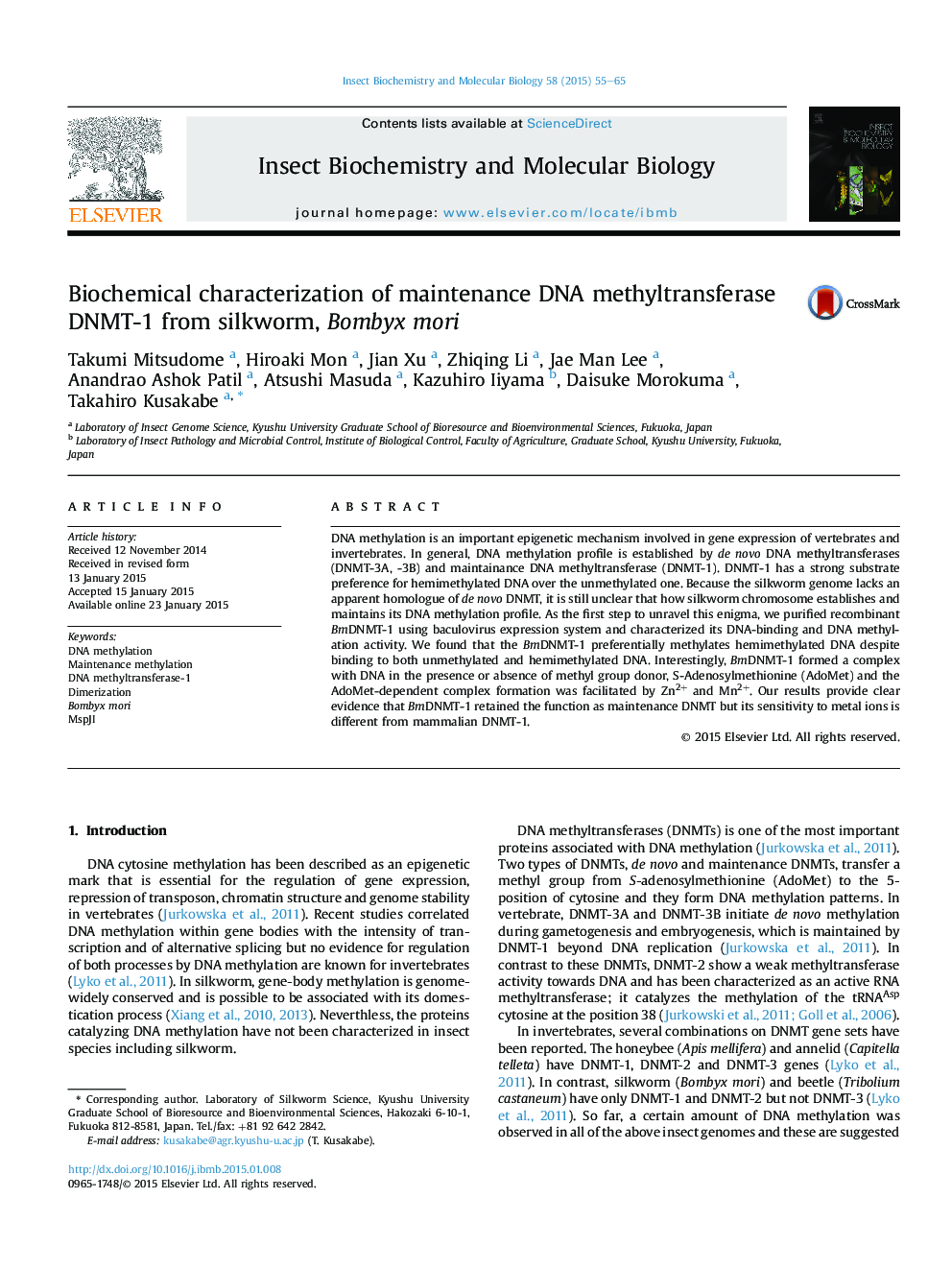| Article ID | Journal | Published Year | Pages | File Type |
|---|---|---|---|---|
| 1982052 | Insect Biochemistry and Molecular Biology | 2015 | 11 Pages |
•Recombinant BmDNMT-1 purified using baculovirus expression system could form a dimeric complex.•We determined DNA methylation activity of BmDNMT-1 using MspJI endonuclease.•BmDNMT-1 showed DNA methylation activity with strong preference for hemimthylated DNA.•AdoMet-dependent and -independent DNA/BmDNMT-1 complexes were formed.•Zn2+/Mn2+ facilitates the formation of AdoMet-dependent DNA/BmDNMT-1 complex.
DNA methylation is an important epigenetic mechanism involved in gene expression of vertebrates and invertebrates. In general, DNA methylation profile is established by de novo DNA methyltransferases (DNMT-3A, -3B) and maintainance DNA methyltransferase (DNMT-1). DNMT-1 has a strong substrate preference for hemimethylated DNA over the unmethylated one. Because the silkworm genome lacks an apparent homologue of de novo DNMT, it is still unclear that how silkworm chromosome establishes and maintains its DNA methylation profile. As the first step to unravel this enigma, we purified recombinant BmDNMT-1 using baculovirus expression system and characterized its DNA-binding and DNA methylation activity. We found that the BmDNMT-1 preferentially methylates hemimethylated DNA despite binding to both unmethylated and hemimethylated DNA. Interestingly, BmDNMT-1 formed a complex with DNA in the presence or absence of methyl group donor, S-Adenosylmethionine (AdoMet) and the AdoMet-dependent complex formation was facilitated by Zn2+ and Mn2+. Our results provide clear evidence that BmDNMT-1 retained the function as maintenance DNMT but its sensitivity to metal ions is different from mammalian DNMT-1.
Graphical abstractFigure optionsDownload full-size imageDownload high-quality image (182 K)Download as PowerPoint slide
